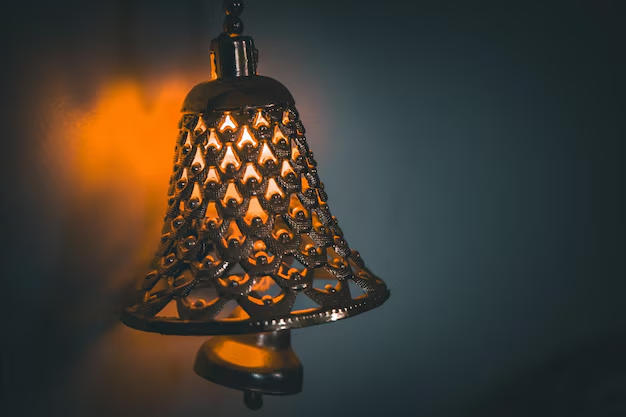In the world of interior design, lighting is a powerful tool that can significantly impact the atmosphere, functionality, and aesthetic appeal of a space. While traditional lighting options like chandeliers, pendant lights, and floor lamps often take center stage, heat lamps are gaining popularity as a versatile and stylish addition to modern interiors. Originally designed for functional purposes, heat have evolved into fashionable fixtures that can enhance both indoor and outdoor spaces.
This blog will explore how heat lamps can transform your space, offering practical interior design tips to help you incorporate these unique lighting solutions into your home.
The Versatility of Heat Lamps in Interior Design
Heat are no longer confined to commercial kitchens or outdoor patios; they are now being recognized as valuable elements in residential interior design. The versatility of heat lamps lies in their ability to provide both warmth and lighting, making them ideal for spaces that require functional and aesthetic enhancements.
1. Understanding the Functionality of Heat Lamps
Before diving into design tips, it’s important to understand the basic functionality of heat lamps. Unlike traditional lighting, heat lamps emit infrared radiation, which provides warmth along with light. This dual-purpose nature makes them particularly useful in areas where comfort and functionality are paramount.
Practical Applications of Heat Lamps:
- Bathroom Warmth: Heat are commonly used in bathrooms to provide warmth after a shower. They can be installed in ceilings or walls to offer focused heat in specific areas, making the bathroom experience more comfortable.
- Outdoor Spaces: Heat lamps are perfect for extending the usability of outdoor spaces like patios, decks, and gardens. They allow you to enjoy these areas even during cooler months by providing necessary warmth.
- Living Rooms and Bedrooms: In residential interiors, heat lamps can be used in living rooms and bedrooms to create a cozy atmosphere, especially in colder climates. They can be strategically placed to add warmth without relying solely on central heating.
2. Incorporating Heat Lamps into Different Design Styles
One of the most appealing aspects of heat lamps is their ability to complement various interior design styles. Whether your home is modern, rustic, industrial, or Scandinavian, there’s a heat lamp design that can seamlessly integrate into your space.
Modern and Minimalist Interiors
Modern and minimalist interiors are characterized by clean lines, neutral color palettes. And a focus on simplicity. Heat lamps with sleek, understated designs can enhance these spaces without overpowering the minimalist aesthetic.
- Recessed Heat Lamps: For a modern look, consider recessed heat lamps that are installed flush with the ceiling or wall. These provide warmth without adding visual clutter, making them perfect for minimalist interiors.
- Slim Profile Designs: Opt for heat with a slim profile and metallic finishes like brushed steel or matte black. These designs blend seamlessly into modern spaces and can be positioned above seating areas, dining tables, or in entryways to create a warm, inviting atmosphere.
Industrial and Urban Chic
Industrial design embraces raw materials, exposed structures, and a mix of vintage and modern elements. Heat lamps with an industrial edge can add warmth and character to these rugged spaces.
- Exposed Bulb Heat Lamps: Choose heat lamps with exposed bulbs and metal cages to enhance the industrial vibe. These lamps can be mounted on walls or ceilings in living rooms, kitchens, or dining areas, serving as both a heat source and a striking design element.
- Freestanding Industrial Heaters: For a bold statement, consider freestanding heat with an industrial design. Look for models with metal bases, exposed hardware, and adjustable arms. These can be placed in living rooms or loft spaces to create a warm and inviting atmosphere.
Rustic and Cozy Interiors
Rustic interiors are known for their warm, earthy tones, natural materials, and cozy ambiance. Heat lamps can enhance the rustic charm of these spaces while providing practical warmth.
- Wood and Metal Combinations: In rustic interiors, choose heat lamps that combine wood and metal elements. These materials complement the natural textures often found in rustic design, such as wooden beams, stone fireplaces, and woven textiles.
- Warm Tones and Soft Lighting: Opt for heat lamps with warm-toned finishes like copper or bronze. These can be placed in living rooms, bedrooms, or dining areas to create a cozy, inviting atmosphere. Consider with dimmable features to adjust the lighting and warmth to your preference.
Scandinavian Design
Scandinavian design is all about simplicity, functionality, and creating a sense of hygge, or coziness. Heat lamps can play a key role in enhancing the warmth and comfort of Scandinavian interiors.
- Neutral Tones and Natural Materials: Choose heat lamps in neutral tones like white, grey, or beige, and look for designs that incorporate natural materials like wood. These can be placed in living rooms, bedrooms, or dining areas to create a warm and inviting environment.
- Minimalist Designs: In keeping with the Scandinavian aesthetic, opt for heat lamps with minimalist designs that focus on functionality. Recessed or wall-mounted can provide warmth without detracting from the clean, uncluttered look of the space.
3. Creating Focal Points with Heat Lamps
In addition to providing warmth, heat lamps can be used to create focal points in a room. Whether you want to highlight a particular area or add visual interest to a space, heat lamps can be strategically placed to draw attention and enhance the overall design.
- Over Dining Tables: Installing heat lamps above a dining table can create a warm and intimate dining experience. Choose a design that complements your dining room decor and consider using multiple lamps for a balanced and cohesive look.
- Accent Walls: Use wall-mounted heat lamps to highlight an accent wall or a piece of artwork. This not only adds warmth to the room but also draws attention to the focal point, making it a central feature of the space.
- Seating Areas: In living rooms or lounges, place heat near seating areas to create cozy, inviting spaces. Freestanding or adjustable heat can be positioned to provide targeted warmth, making these areas perfect for relaxation or socializing.
4. Enhancing Outdoor Living Spaces with Heat Lamps
Outdoor living spaces have become an extension of the home, with more people looking to create comfortable and stylish environments in their gardens, patios, or balconies. Heat lamps are an essential element in making these spaces usable year-round.
Freestanding Patio Heaters
Freestanding heat lamps are ideal for outdoor spaces, providing both warmth and style. These heaters come in various designs, from sleek and modern to rustic and traditional. Place them around seating areas or dining tables to create a warm and inviting atmosphere for outdoor gatherings.
Wall-Mounted Outdoor Heat Lamps
For smaller patios or balconies, wall-mounted outdoor heat lamps can provide targeted warmth without taking up floor space. Choose weather-resistant finishes and materials that can withstand the elements while still looking stylish.
String Lights with Heat Lamps
Combine the charm of string lights with the functionality of heat by incorporating heat-emitting string lights into your outdoor decor. These lights can be draped over pergolas, around patios, or along garden paths to create a magical and warm outdoor setting.
5. Tips for Choosing the Right Heat Lamp
When selecting a heat lamp for your space, it’s essential to consider both its functional and aesthetic qualities. Here are some tips to help you choose the right heat lamp for your home:
- Determine the Purpose: Consider where you need the heat lamp and what you want it to accomplish. Is it primarily for warmth, or are you looking for a design element that also provides heat?
- Match with Existing Decor: Choose a heat lamp that complements your existing decor. Consider the color, finish, and style of the lamp to ensure it fits seamlessly into your space.
- Consider the Size and Placement: The size and placement of the heat lamp are crucial. Make sure the lamp is appropriately sized for the space and placed where it will be most effective in providing warmth.
- Energy Efficiency: Opt for energy-efficient models that offer the warmth you need without a significant increase in energy consumption. Look for lamps with adjustable settings to control the level of heat and light.
- Safety Features: Ensure that the heat lamp has adequate safety features, such as automatic shut-off mechanisms or heat-resistant materials. Especially if it will be used in high-traffic areas or around children and pets.
Conclusion
Heat lamps offer a unique opportunity to blend style and function in interior design. Whether you’re looking to add warmth to a minimalist living room, enhance the industrial vibe of your loft, or create a cozy outdoor retreat, heat lamps can be an excellent addition to your home. By carefully selecting the right design, placement, and style, you can ensure that your heat lamps not only provide the warmth you need but also enhance the overall aesthetic of your space. As you explore the possibilities, remember that the key to successfully incorporating heat lamps into your interior design is to strike the perfect balance between style and function.


